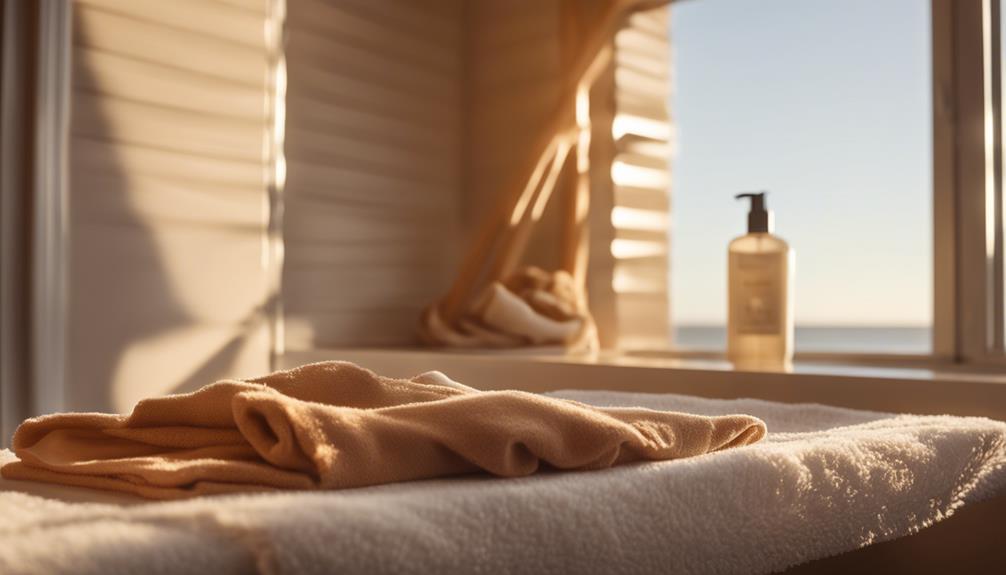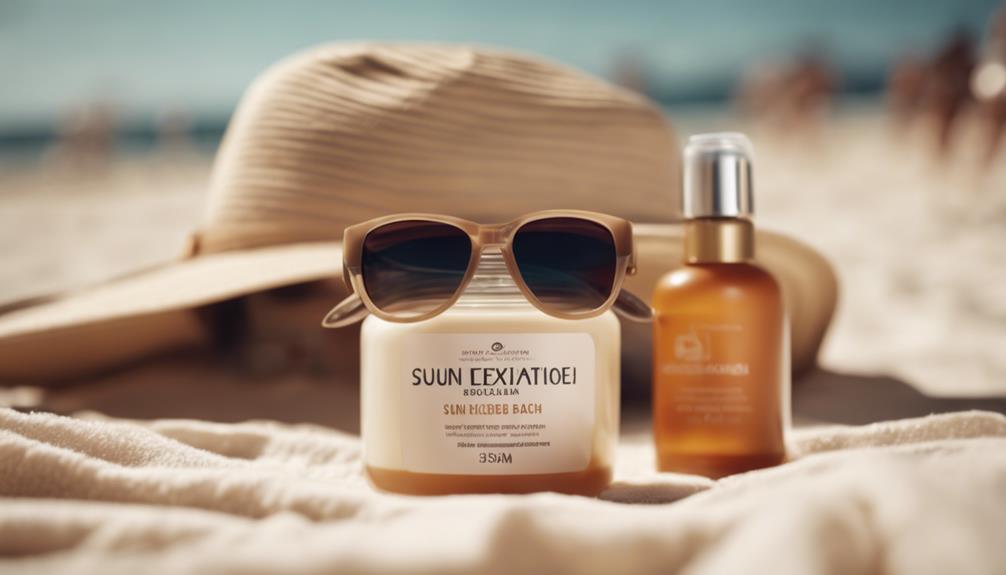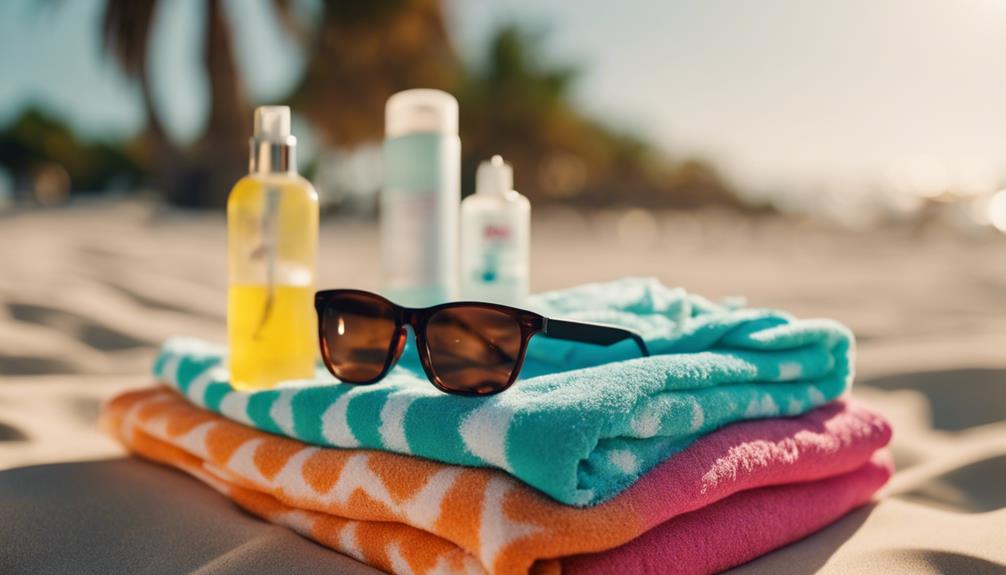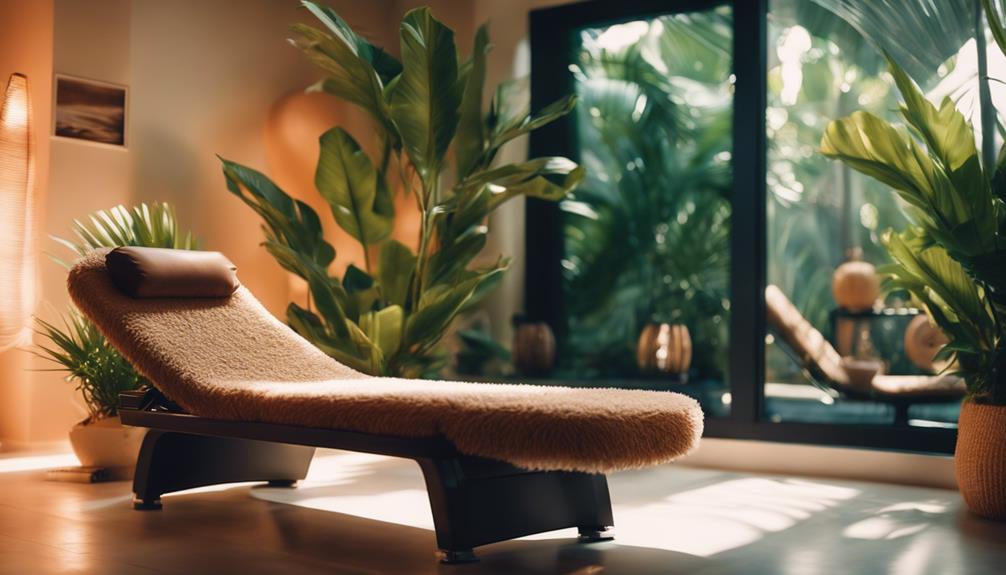Tanning beds can be an enjoyable way to achieve a sun-kissed look, but it’s important to remember some key tips. To start, identify your skin type; fair skin is prone to burning, so begin with short sessions of 5-8 minutes. Be sure to apply a quality indoor tanning lotion to keep your skin moisturized, and always wear protective goggles to shield your eyes! After tanning, take a rejuvenating shower and apply moisturizer to maintain your tan. Interested in learning more about safe tanning options? Stay tuned, there’s more to discover! If you’re new to tanning beds, it’s essential to learn some crucial tanning bed tips. It’s important to pace yourself and avoid excessive exposure, especially at first. Gradually increase your tanning time as your skin adjusts to UV rays. Additionally, always seek advice from a professional at the tanning salon to ensure you’re using the equipment correctly and safely. Following these key tanning bed tips will help you achieve a gorgeous, healthy glow without compromising your skin’s well-being.
Key Takeaways
- Assess your skin type to determine sensitivity, as fair skin burns quicker and requires special care during tanning.
- Start with short sessions of 5-8 minutes and gradually increase exposure time to allow your skin to adapt.
- Always wear protective goggles to shield your eyes from harmful UV rays during tanning sessions.
- Use an appropriate indoor tanning lotion to promote hydration and enhance the quality of your tan.
Understanding Skin Sensitivity
Understanding your skin sensitivity is essential for safely enjoying tanning beds and achieving an even, natural-looking tan. You know how some friends tan like a pro, while others turn into lobsters? That's skin sensitivity at work!
Before you jump in, it's smart to assess your skin type. Take a quick quiz to see how your skin reacts to UV rays. If you've got fair skin, you might burn faster than you can say “beach day!”
Chatting with salon professionals can also help—they've got the tips you need. Remember, prepping your skin is like warming up before a game; it helps you avoid burns and guarantees your tan looks fabulous.
Selecting the Right Products
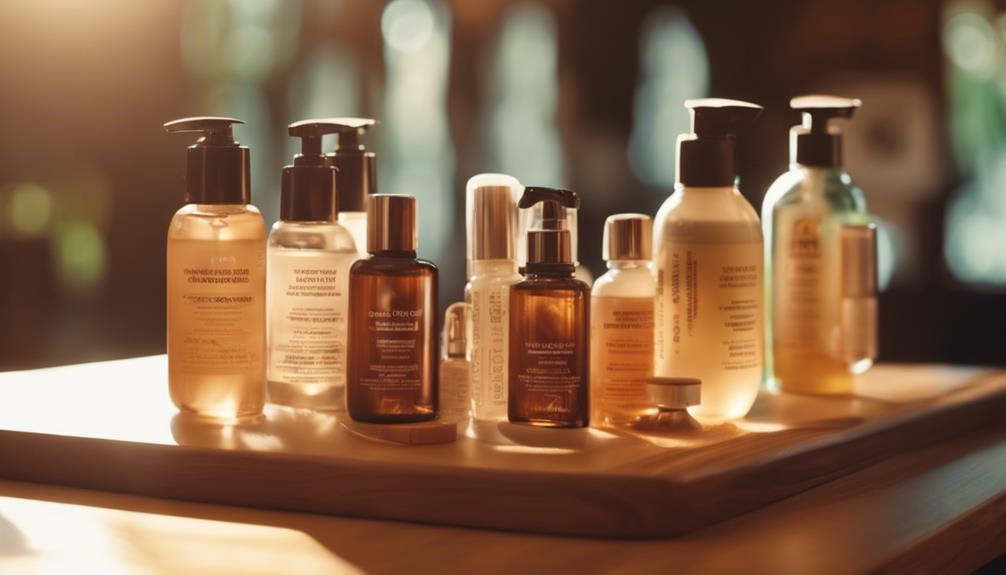
Knowing your skin sensitivity sets the stage for selecting the right tanning products that will enhance your results and keep your skin healthy. Start with a lotion that suits your skin type—it's like choosing the right outfit for a big event! Hydration is key, so look for moisturizers that boost moisture and help you tan better.
| Product Type | Key Features |
|---|---|
| Tanning Lotion | Hydrating, matches skin type |
| Indoor Tanning Lotion | Designed for indoor use, quick absorption |
| Bronzers | Intensifies color, adds instant glow |
| Moisturizers | Enhances hydration, prolongs tan |
Tanning Bed Usage Guidelines
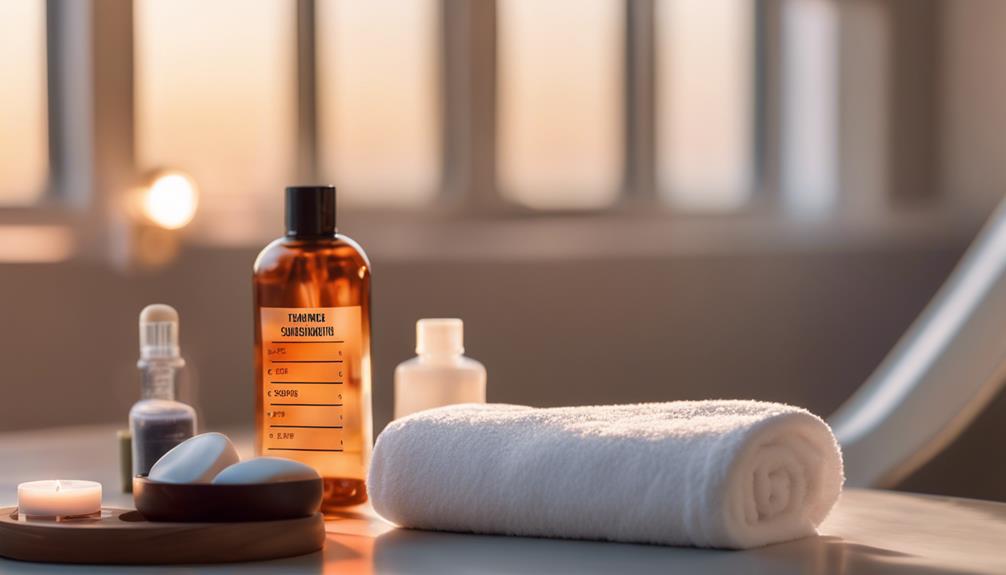
To achieve the best results from your tanning bed sessions, start with short exposure times and gradually increase the duration as your skin adapts.
Think of it like a rollercoaster—if you plunge in too fast, you might get a bit scared! For most beginners, sticking to about 5 to 8 minutes is a solid start.
After each session, wait at least 48 hours before going back; your skin needs time to recover, just like how you need a break after playing outside all day.
If you've got sensitive skin, consider starting with a Level One tanning bed, which is gentler.
Protective Gear Essentials
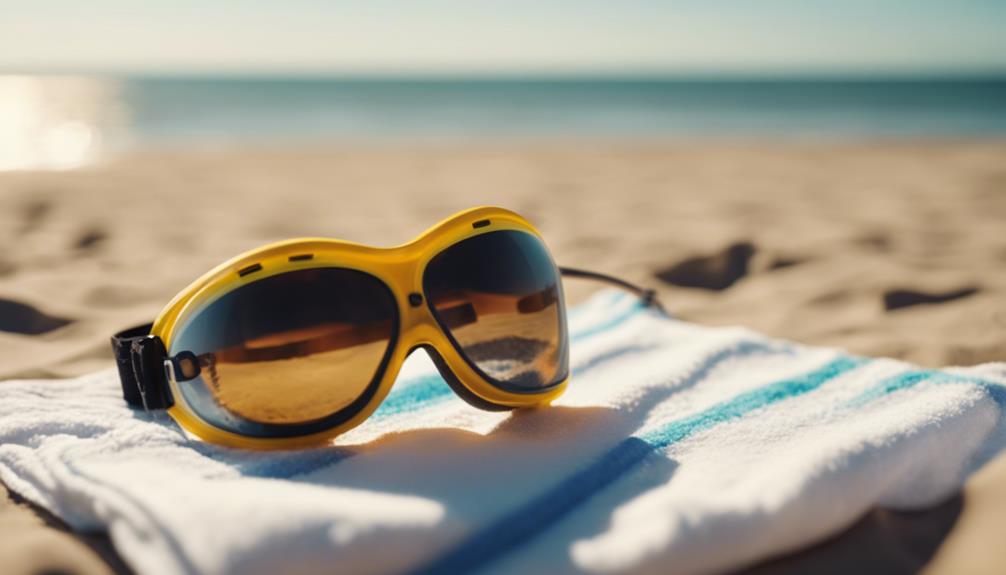
What protective gear do you need to guarantee a safe and enjoyable tanning bed experience?
First and foremost, don't forget those goggles! They're not just a fashion statement; they protect your eyes from harmful UV rays.
Next, consider wearing a swimsuit or some form of clothing that covers sensitive areas, keeping your skin safe from overexposure.
You might even want to bring your own goggles for extra comfort and cleanliness—after all, who wants to share?
Also, remember to apply a good indoor tanning lotion to keep your skin hydrated and help achieve that sun-kissed glow.
With these essentials in tow, you're set for a fantastic tanning session—just don't forget to enjoy the process! Happy tanning!
Safety Precautions for Tanning
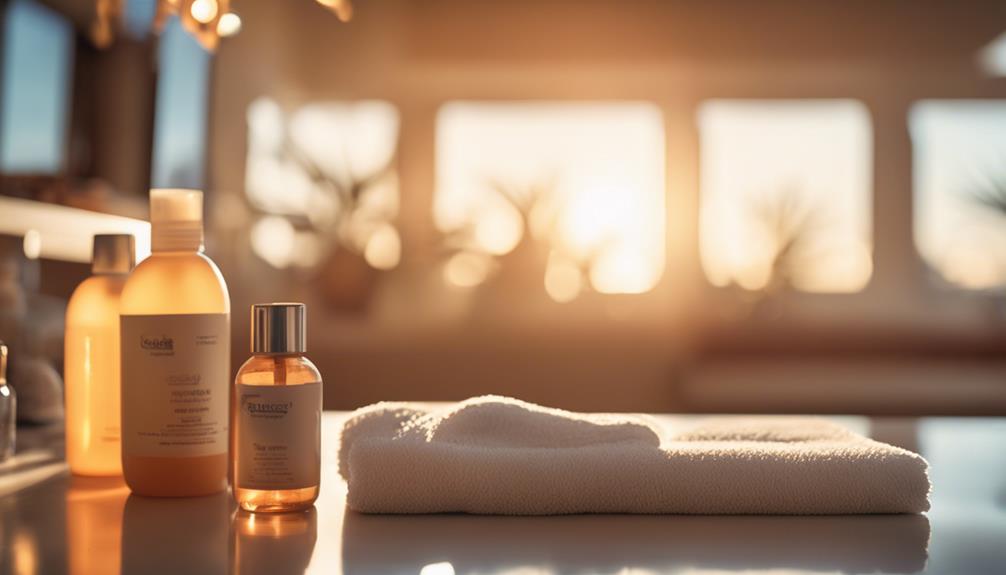
Always take safety precautions before hitting the tanning bed to protect your skin and health. Remember, your skin is like a delicate painting; if you don't care for it, the colors fade!
Here are some essential reminders to keep in mind before your session:
- Always wear protective goggles to shield your eyes from harmful rays.
- Use a tanning lotion that's right for your skin type to keep it hydrated.
- Limit your tanning sessions and never exceed recommended times.
- Check for any skin reactions after your first session; listen to your body!
Post-Tanning Care Tips
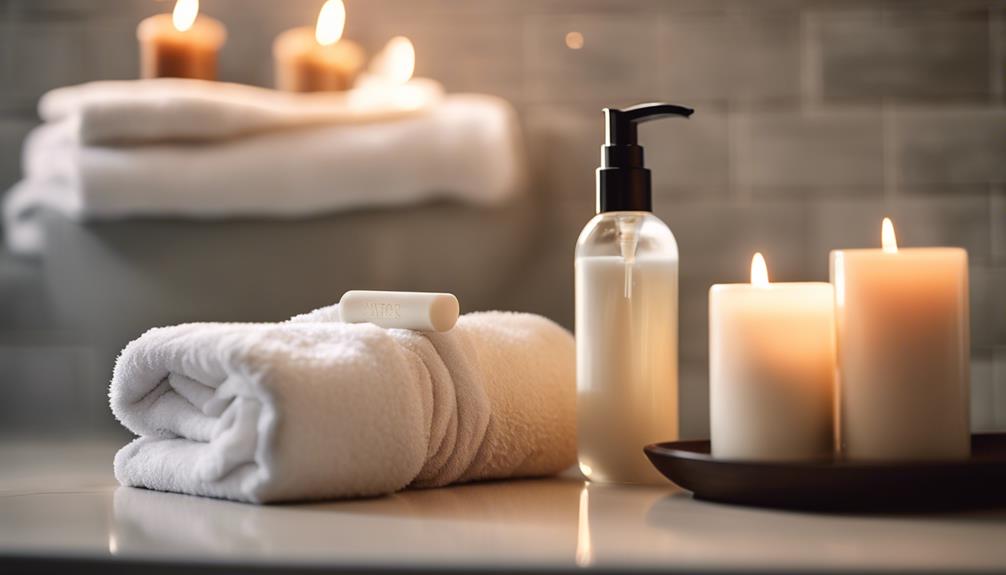
Post-tanning care is essential for maintaining your glow and keeping your skin healthy, so don't skip this important step.
After your tanning session, cool off with a rejuvenating shower—think of it like washing away the sun without losing that beautiful bronzed look!
Next, slather on a good moisturizer to keep your skin hydrated and help that tan stick around longer. It's like giving your skin a big drink of water after a long day in the sun. Remember, hydration is key!
Also, try to avoid hot baths or heavy scrubs for a few days; they can fade your tan faster than you can say “beach day.”
Exploring Tanning Alternatives
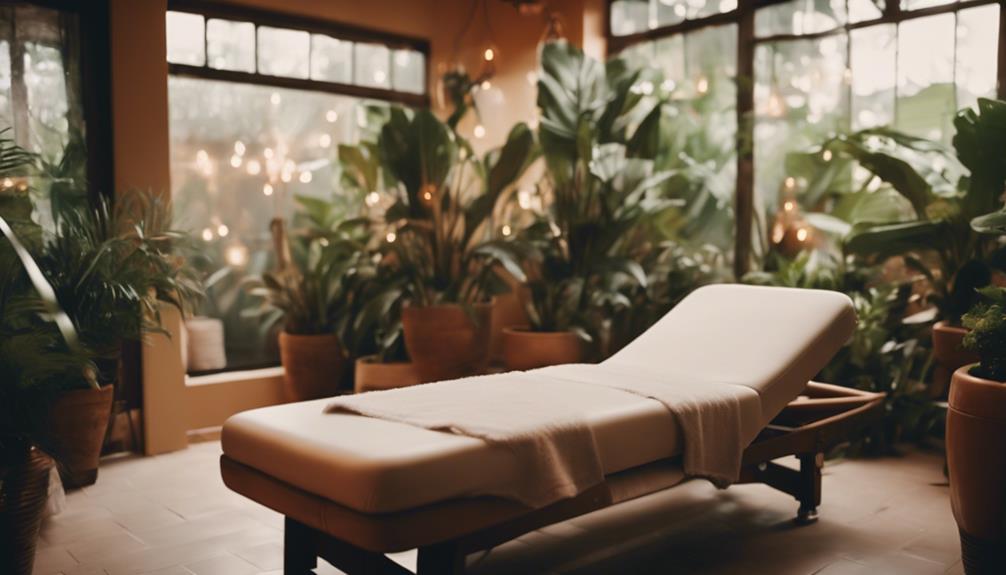
If you're looking for a healthier way to achieve that sun-kissed look, exploring tanning alternatives can be a game-changer. You'll find options that not only give you a gorgeous glow but also keep your skin happy. Imagine stepping out with confidence, knowing you didn't compromise your skin health!
Instant gratification with bronzers for a quick glow.
Spray tans that leave you looking naturally sun-kissed.
Sunless tanning lotions that hydrate while they tan.
Natural oils that nourish your skin and enhance your tan.
The joy of a no-fuss routine, perfect for busy days.
Frequently Asked Questions
How Often Should I Tan in a Week for Best Results?
You should tan about two to three times a week for best results. This allows your skin to recover while gradually building a tan. Always listen to your skin and adjust frequency if needed.
What Should I Wear in the Tanning Bed?
While you might think a swimsuit's enough, consider wearing special tanning gear instead. Opt for minimal clothing to guarantee even coverage, but always protect your eyes with goggles to balance style and safety during your session.
Can I Tan if I Have a Sunburn?
You shouldn't tan with a sunburn. Your skin's already damaged, and tanning can worsen the burn, increasing pain and peeling. Allow your skin to heal completely before considering any tanning sessions for best results.
Are Tanning Beds Safe for All Skin Types?
Did you know around 30% of people experience skin sensitivity when using tanning beds? Tanning beds aren't safe for everyone; it's essential to assess your skin type and consult professionals for personalized advice before using them.
How Can I Tell if I'm Tanning Too Much?
You can tell if you're tanning too much by watching for redness, peeling skin, or discomfort. If you notice these signs, reduce your sessions and give your skin time to recover. Always prioritize skin health.
Conclusion
So there you have it—your ultimate guide to tanning beds! You're now ready to step into that magical glowing chamber without turning into a lobster.
Remember, it's not just about looking like you've just returned from a tropical vacation; it's about keeping your skin happy and healthy too.
So grab your lotion, don your protective gear, and remember: moderation is key.
Soon, you'll be the envy of your friends—just try not to look too much like a walking carrot!
